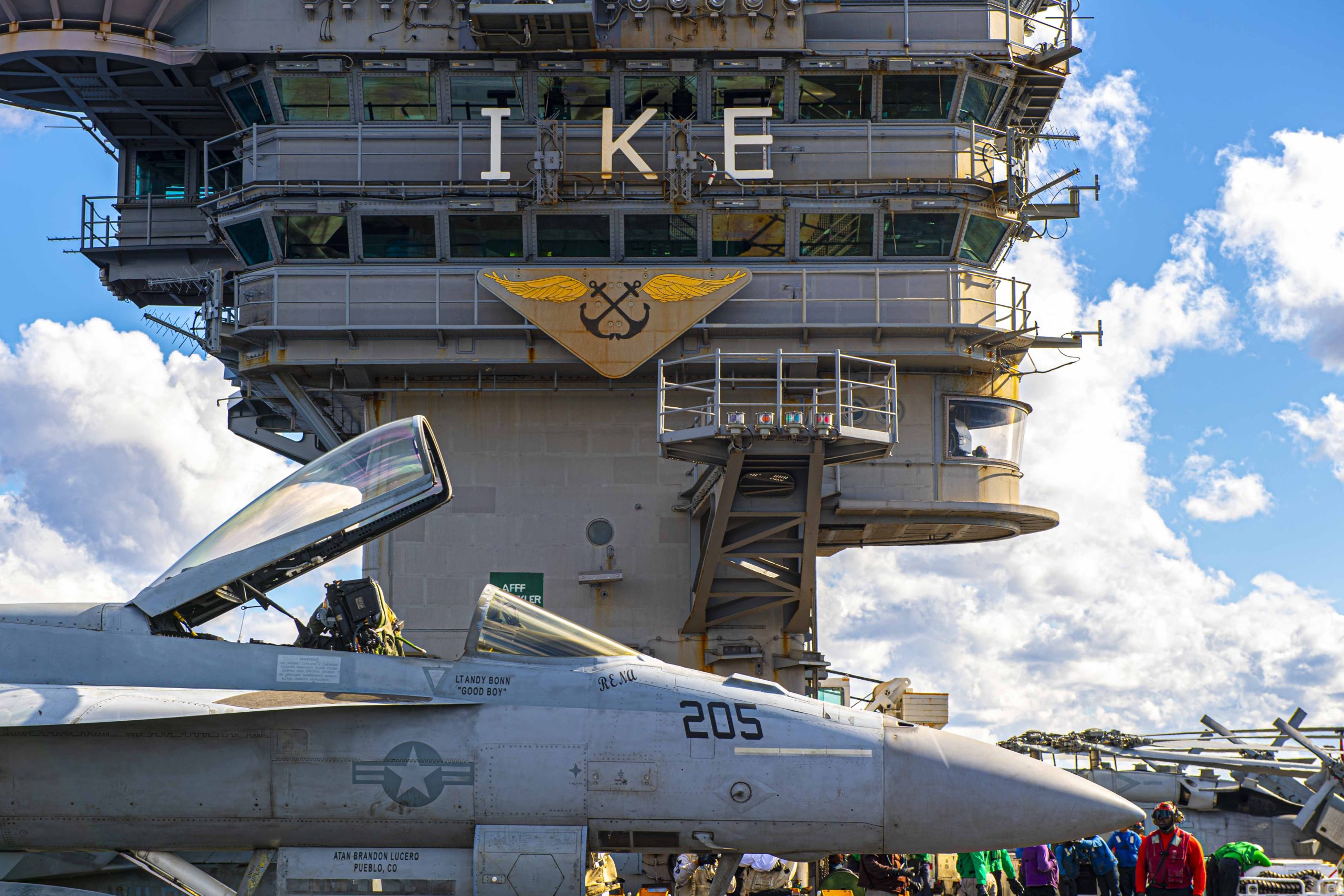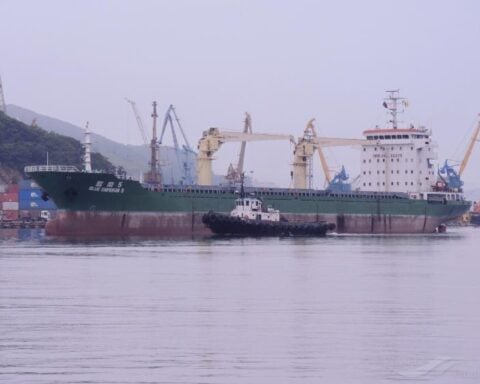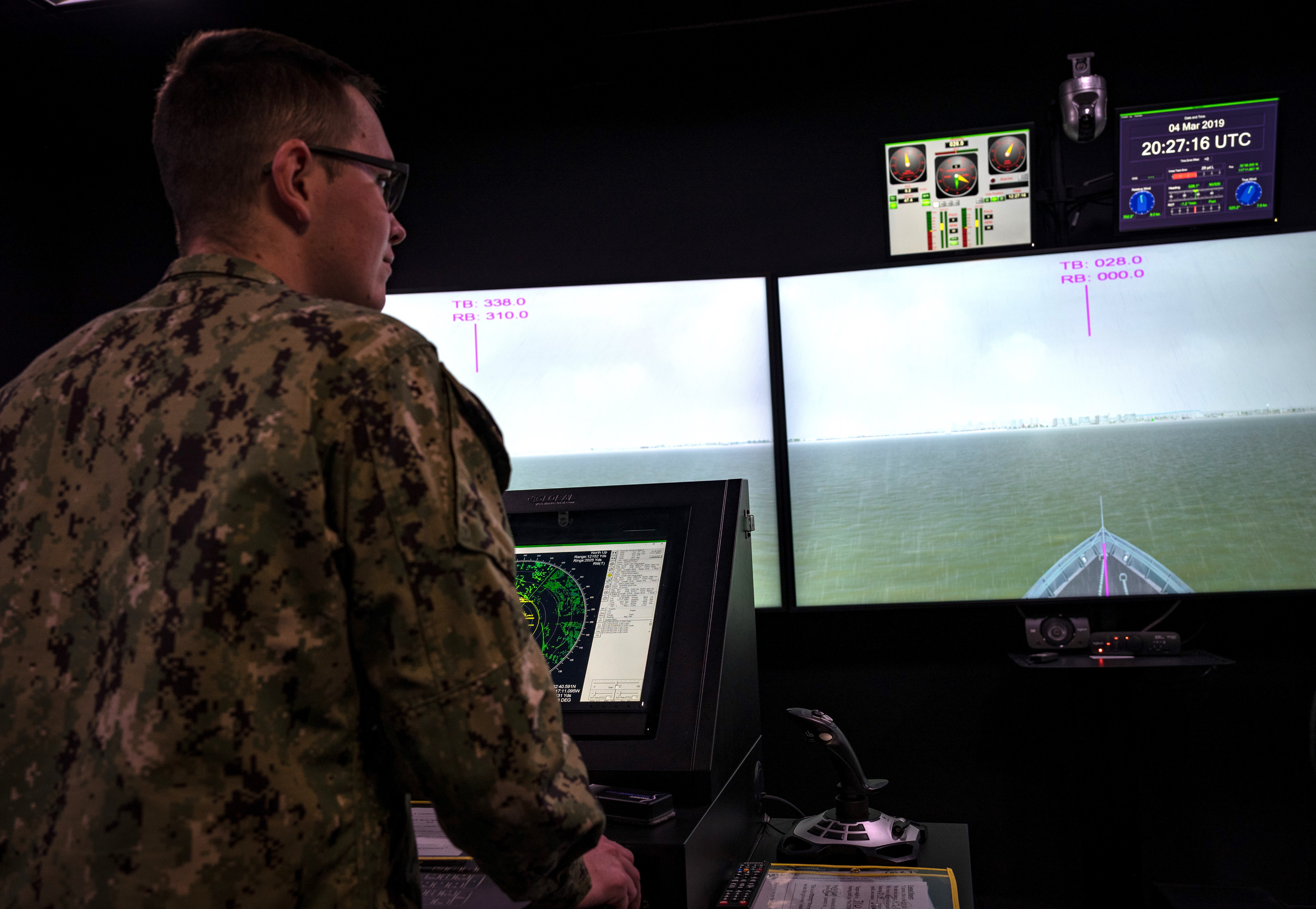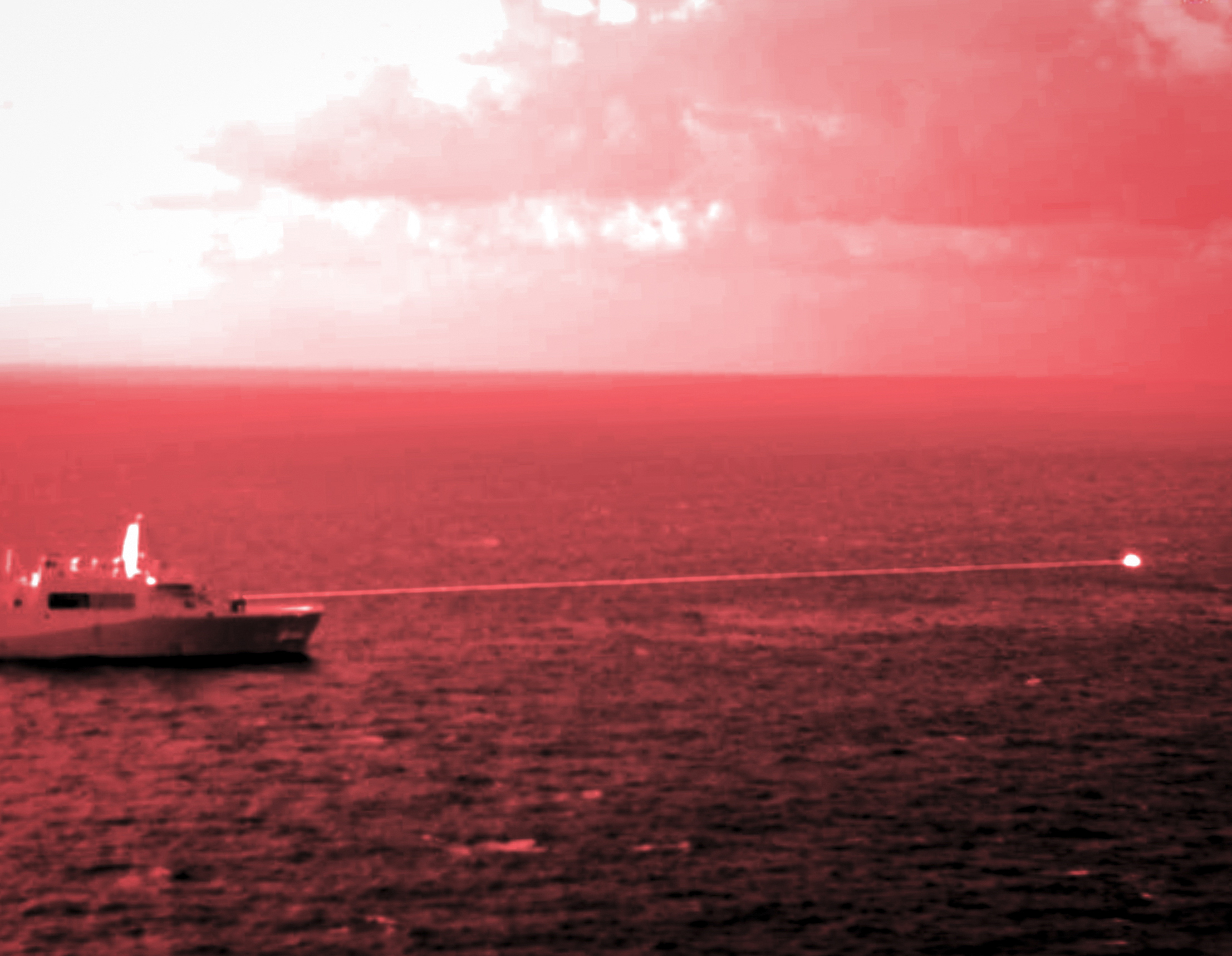
THE PENTAGON – The Dwight D. Eisenhower Carrier Strike Group is in the middle of the Atlantic Ocean as it heads to the Middle East, instead of joining the Gerald R. Ford Carrier Strike Group in the Eastern Mediterranean.
Secretary of Defense Lloyd Austin directed the Ike Carrier Strike Group to U.S. Central Command on Sunday, Pentagon Press Secretary Brig. Gen. Pat Ryder told reporters Monday morning.
The Dwight D. Eisenhower Carrier Strike Group, which includes Arleigh Burke-class destroyers USS Gravely (DDG-107) and USS Mason (DDG-87) and Ticonderoga-class guided-missile cruiser USS Philippine Sea (CG-58), deployed Oct. 14, with initial plans to head to the U.S. European Command area of response.
Despite deploying Saturday, USS Dwight D. Eisenhower (CVN-69), the flag ship of the carrier strike group, was still off of the coastline of Virginia Beach, Va., as of Thursday, USNI News understood. The ship was completing a final set of carrier qualifications before departing the East Coast. Ike is now in the western Atlantic Ocean, according to the USNI News Fleet and Marine Tracker.
“When we send them somewhere, we are deliberately sending an incredibly strong signal to our adversaries, but also to our allies and partners about the depth of our support and the ability of the U.S. military to expeditiously dynamically respond to contingencies anywhere in the world. That’s what we’re demonstrating today in the Middle East,” a senior defense official told reporters on Monday.
The Ike CSG’s trek to U.S. 5th Fleet makes it the first CSG in the region since the 2021 withdrawal from Afghanistan, according to the USNI News Fleet and Marine Tracker.
At the time, USS Ronald Reagan (CVN-76) had moved from the Western Pacific to the North Arabian Sea to cover the withdrawal.
The strike group will likely still pass through the Mediterranean Sea and through the Suez Canal, rather than sail around the south of Africa, USNI News understands.
Ford and the other ships operating in the Eastern Mediterranean are under the control of U.S. European Command, while warships in the Red Sea, Gulf of Aden, North Arabian Sea and in the Persian Gulf are in U.S. Central Command. Israel is also in the U.S. Central Command area of operations.
The massing of two carrier strike groups in the Mediterranean Sea – before Ike transits the Suez – and the three-ship Bataan Amphibious Ready Group will be the largest mass of U.S. naval forces in the Mediterranean in decades, former commander of U.S. Naval Forces Europe-Africa told USNI News last week.
“That’s probably more ships that we’ve had in that area since 1993,” Adm. James Foggo told USNI News on Thursday.
In February of 1993, aircraft carriers USS John F. Kennedy (CV-67) and USS Theodore Roosevelt (CVN-71) and their escorts were operating in the Eastern Mediterranean as part of the ongoing operation to enforce the no-fly zone over Bosnia while USS Kitty Hawk (CV-63) was in the Persian Gulf enforcing Operation Southern Watch.
In addition to the naval buildup, Austin also ordered the deployment of a Terminal High Altitude Area Defense (THAAD) battery and more Patriot battalions to the Middle East to increase force protection for the U.S.. Ryder could not say specifically where the deployments would go.
“The focus of the department continues to be on supporting Israel’s right to defend itself from terrorist attacks, deterring a broader conflict in the region and then ensuring force protection of our troops,” Ryder said.
There has been an increase in the number of drone and rocket attacks on U.S. forces in the Middle East region in conjunction with the Hamas attacks in Israel, Ryder said. Iran and Iran proxy groups have made multiple efforts to expand the war beyond Israel and Hamas, the senior defense official said.
The Ike and the Gerald R. Ford CSGs are meant to serve as deterrence against other nations, including Iran, from widening the conflict between Israel and Hamas to a regional one. Ford and its escorts were already in the Mediterranean on deployment when Austin ordered the CSG to the Eastern Mediterranean as for the United States’ initial response to the Oct. 7 Hamas attacks in Israel.
The conflict has already spilled over to Lebanon, where Israeli forces have clashed with Hezbollah, according to The Associated Press.
Last week, Houthis in Yemen fired four land attack cruise missile and 15 long-range attack drones, which were shot down by USS Carney (DDG-64). The destroyer used SM-2s and the ship’s five-inch gun to take down the missiles and drones, according to a Navy official. Ryder did not have any additional details on the missile targets, the range of the missiles or how Carney intercepted them.
The senior defense official could also not give any more information on the range of the Houthi-launched missiles.
“But let’s be clear that Iran has been increasing the sophistication and lethality of equipment that has been providing to the Houthis for years, and CENTCOM has been very public about the multiple times just in this year of interdicting many of those illicit weapons shipments,” the senior defense official said.





